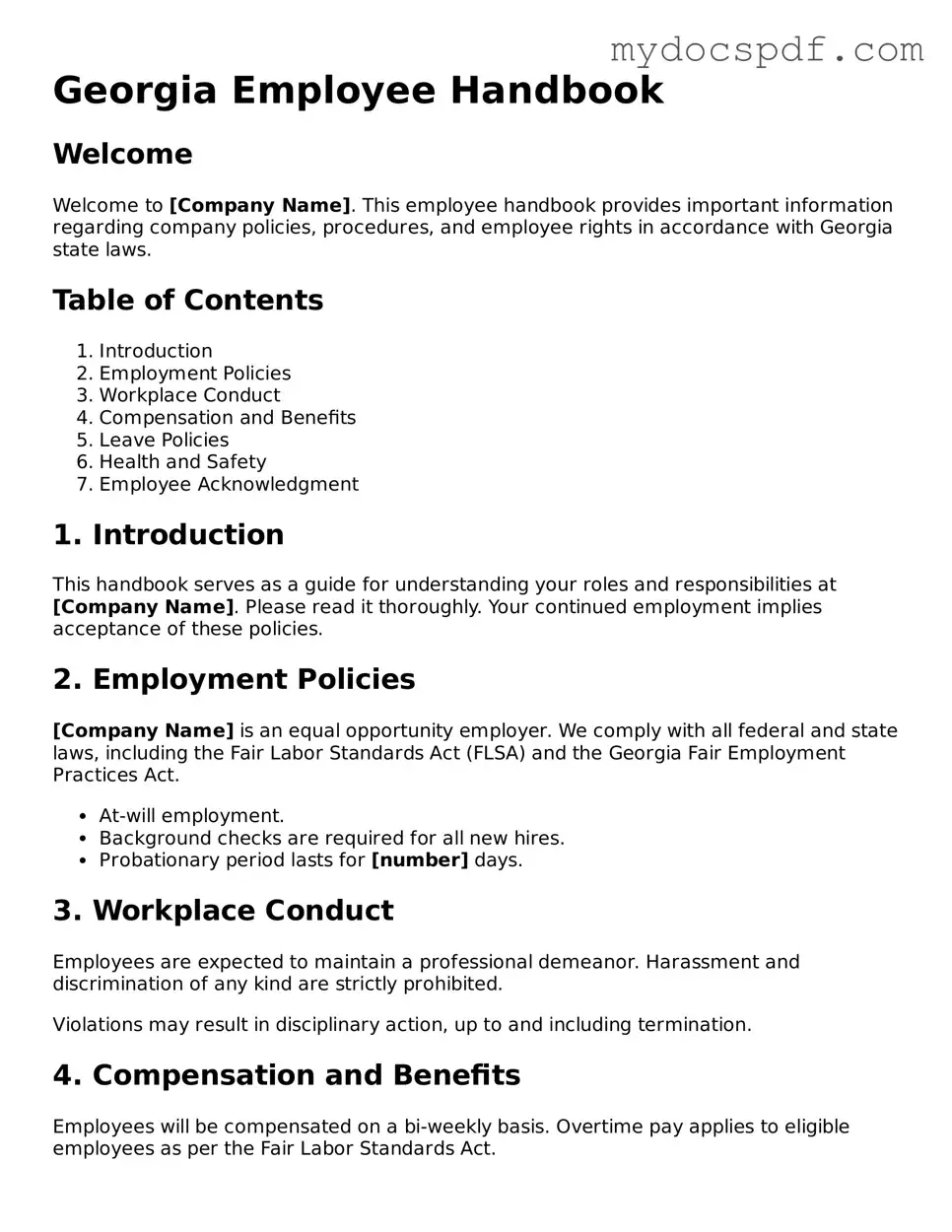Georgia Employee Handbook
Welcome
Welcome to [Company Name]. This employee handbook provides important information regarding company policies, procedures, and employee rights in accordance with Georgia state laws.
Table of Contents
- Introduction
- Employment Policies
- Workplace Conduct
- Compensation and Benefits
- Leave Policies
- Health and Safety
- Employee Acknowledgment
1. Introduction
This handbook serves as a guide for understanding your roles and responsibilities at [Company Name]. Please read it thoroughly. Your continued employment implies acceptance of these policies.
2. Employment Policies
[Company Name] is an equal opportunity employer. We comply with all federal and state laws, including the Fair Labor Standards Act (FLSA) and the Georgia Fair Employment Practices Act.
- At-will employment.
- Background checks are required for all new hires.
- Probationary period lasts for [number] days.
3. Workplace Conduct
Employees are expected to maintain a professional demeanor. Harassment and discrimination of any kind are strictly prohibited.
Violations may result in disciplinary action, up to and including termination.
4. Compensation and Benefits
Employees will be compensated on a bi-weekly basis. Overtime pay applies to eligible employees as per the Fair Labor Standards Act.
- Health insurance options available.
- Retirement plans with company matching contributions.
- Paid time off is accrued based on tenure.
5. Leave Policies
Employees may request leave for personal matters, illness, or family emergencies. Compliance with the Family and Medical Leave Act (FMLA) is mandatory.
- Sick leave: [number] days per year.
- Vacation leave: [number] days per year.
- Parental leave policies are outlined per Georgia state law.
6. Health and Safety
The safety and well-being of employees is a top priority. Adherence to OSHA regulations is mandatory.
Employees must report unsafe conditions or incidents immediately to their supervisor.
7. Employee Acknowledgment
By signing below, you acknowledge that you have read and understood the policies outlined in this handbook.
Employee Name: ___________________________
Signature: ___________________________________
Date: ________________
